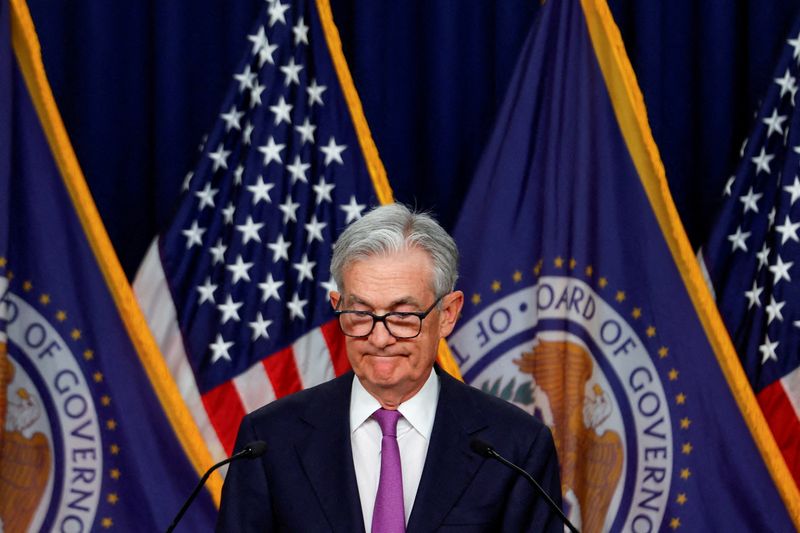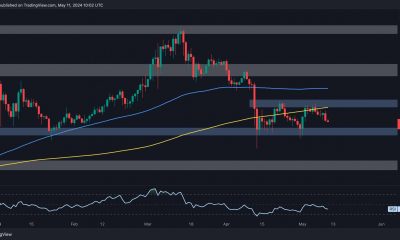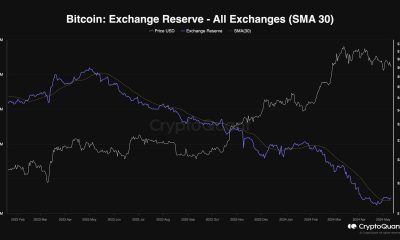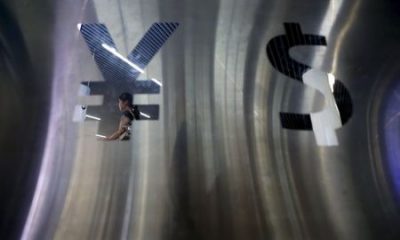Economy
Fed signals cautious monetary policy amid economic growth and geopolitical risks


© Pavlo Gonchar / SOPA Images/Sipa via Reuters Connect
Federal Reserve Chair Jerome Powell, speaking at the Economic Club of New York on Thursday, emphasized a cautious approach to monetary policy, indicating that the central bank is ready to raise interest rates if economic growth continues unabated. Noting the potential impact of rising long-term bond yields on policy decisions, Powell outlined how the Fed is considering additional policy firming and restrictive policy duration based on incoming data, evolving outlook, and risk balance.
Powell’s comments reinforced market expectations for the Federal Open Market Committee (FOMC) to maintain steady interest rates for a second consecutive meeting. This pause marks a temporary halt in their 19-month campaign to control inflation. The announcement led to a drop in yields on 2- and 10-year Treasuries, depreciation of the dollar against major currencies, and an uplift in the .
Last month, officials maintained the policy rate between 5.25% and 5.5%. Forecasts indicate that 12 of 19 officials favored another hike this year. Despite this pause, Powell acknowledged the possibility of further tightening due to resilient economic growth and labor demand. He suggested that evidence of persistently above-trend growth or labor market tightness could jeopardize inflation progress and necessitate further monetary policy tightening.
Core inflation, excluding volatile food and energy prices, has decelerated to below 4% annually and below 3% on a three-month annualized measure. Yet, recent U.S. economic data showed strong retail sales and industrial production in September, with nonfarm payroll gains averaging 266,000 over the past three months.
Powell reiterated the FOMC’s commitment to achieving a restrictive enough policy stance to sustainably reduce inflation to 2% over time. However, he cautioned about short-term measures’ volatility and asserted that inflation is still too high. He also indicated that the Fed’s rate hikes have had a significant impact on the economy, suggesting that further tightening may be forthcoming.
Noting “highly elevated” geopolitical risks, including the recent attack on Israel, Powell acknowledged potential impacts on the global economy. He also noted signs of labor market cooling and suggested that achieving sustainable 2% inflation may necessitate below-trend growth and further labor market softening.
The pace of Powell’s tightening campaign has been the fastest since former Chair Paul Volcker’s late 1970s inflation attack. The abrupt rise in longer-term Treasury yields since July has led some Fed officials, like Vice Chair Philip Jefferson, to focus more on overall financial conditions when planning their next move. While Fed officials reiterated their intention to bring inflation back to 2%, September meeting minutes reveal they are also considering the risk of excessive restraint potentially leading to an economic downturn.
This article was generated with the support of AI and reviewed by an editor. For more information see our T&C.
Economy
Russian central bank says it needs months to make sure CPI falling before rate cuts -RBC


© Reuters. Russian Central Bank Governor Elvira Nabiullina attends a news conference in Moscow, Russia June 14, 2019. REUTERS/Shamil Zhumatov/File Photo
MOSCOW (Reuters) – Russia’s central bank will need two to three months to make sure that inflation is steadily declining before taking any decision on interest rate cuts, the bank’s governor Elvira Nabiullina told RBC media on Sunday.
The central bank raised its key interest rate by 100 basis points to 16% earlier in December, hiking for the fifth consecutive meeting in response to stubborn inflation, and suggested that its tightening cycle was nearly over.
Nabiullina said it was not yet clear when exactly the regulator would start cutting rates, however.
“We really need to make sure that inflation is steadily decreasing, that these are not one-off factors that can affect the rate of price growth in a particular month,” she said.
Nabiullina said the bank was taking into account a wide range of indicators but primarily those that “characterize the stability of inflation”.
“This will take two or three months or more – it depends on how much the wide range of indicators that characterize sustainable inflation declines,” she said.
The bank will next convene to set its benchmark rate on Feb. 16.
The governor also said the bank should have started monetary policy tightening earlier than in July, when it embarked on the rate-hiking cycle.
Economy
China identifies second set of projects in $140 billion spending plan


© Reuters. FILE PHOTO: Workers walk past an under-construction area with completed office towers in the background, in Shenzhen’s Qianhai new district, Guangdong province, China August 25, 2023. REUTERS/David Kirton/File Photo
SHANGHAI (Reuters) – China’s top planning body said on Saturday it had identified a second batch of public investment projects, including flood control and disaster relief programmes, under a bond issuance and investment plan announced in October to boost the economy.
With the latest tranche, China has now earmarked more than 800 billion yuan of its 1 trillion yuan ($140 billion) in additional government bond issuance in the fourth quarter, as it focuses on fiscal steps to shore up the flagging economy.
The National Development and Reform Commission (NDRC) said in a statement on Saturday it had identified 9,600 projects with planned investment of more than 560 billion yuan.
China’s economy, the world’s second largest, is struggling to regain its footing post-COVID-19 as policymakers grapple with tepid consumer demand, weak exports, falling foreign investment and a deepening real estate crisis.
The 1 trillion yuan in additional bond issuance will widen China’s 2023 budget deficit ratio to around 3.8 percent from 3 percent, the state-run Xinhua news agency has said.
“Construction of the projects will improve China’s flood control system, emergency response mechanism and disaster relief capabilities, and better protect people’s lives and property, so it is very significant,” the NDRC said.
The agency said it will coordinate with other government bodies to make sure that funds are allocated speedily for investment and that high standards of quality are maintained in project construction.
($1 = 7.1315 renminbi)
Economy
Russian central bank says it needs months to make sure CPI falling before rate cuts -RBC


© Reuters. Russian Central Bank Governor Elvira Nabiullina attends a news conference in Moscow, Russia June 14, 2019. REUTERS/Shamil Zhumatov/File Photo
MOSCOW (Reuters) – Russia’s central bank will need two to three months to make sure that inflation is steadily declining before taking any decision on interest rate cuts, the bank’s governor Elvira Nabiullina told RBC media on Sunday.
The central bank raised its key interest rate by 100 basis points to 16% earlier in December, hiking for the fifth consecutive meeting in response to stubborn inflation, and suggested that its tightening cycle was nearly over.
Nabiullina said it was not yet clear when exactly the regulator would start cutting rates, however.
“We really need to make sure that inflation is steadily decreasing, that these are not one-off factors that can affect the rate of price growth in a particular month,” she said.
Nabiullina said the bank was taking into account a wide range of indicators but primarily those that “characterize the stability of inflation”.
“This will take two or three months or more – it depends on how much the wide range of indicators that characterize sustainable inflation declines,” she said.
The bank will next convene to set its benchmark rate on Feb. 16.
The governor also said the bank should have started monetary policy tightening earlier than in July, when it embarked on the rate-hiking cycle.

 Forex2 years ago
Forex2 years agoForex Today: the dollar is gaining strength amid gloomy sentiment at the start of the Fed’s week

 Forex2 years ago
Forex2 years agoHow is the Australian dollar doing today?

 Forex1 year ago
Forex1 year agoUnbiased review of Pocket Option broker

 Forex2 years ago
Forex2 years agoDollar to pound sterling exchange rate today: Pound plummeted to its lowest since 1985

 Cryptocurrency2 years ago
Cryptocurrency2 years agoWhat happened in the crypto market – current events today

 World2 years ago
World2 years agoWhy are modern video games an art form?

 Stock Markets2 years ago
Stock Markets2 years agoMorgan Stanley: bear market rally to continue

 Economy2 years ago
Economy2 years agoCrude oil tankers double in price due to EU anti-Russian sanctions

































